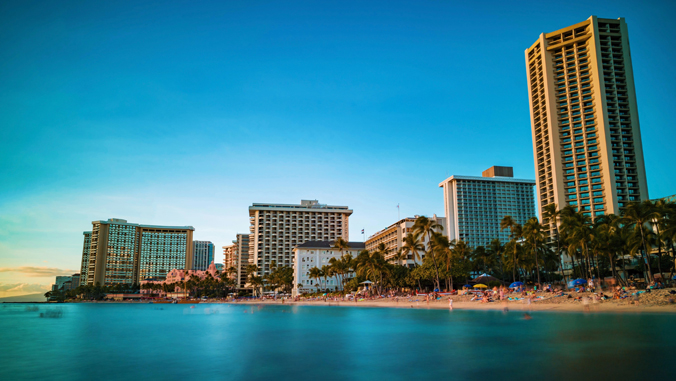
To help Hawaiʻi's tourism industry recover from the COVID-19 pandemic, new research from the University of Hawaiʻi at Mānoa suggests a potentially under-utilized form of revenue that visitors are actually willing to pay for: sustainable experiences. These include activities some visitor industry destinations are already offering, such as clearing plastics off beaches and planting trees to offset the carbon footprint. According to study co-author and School of Travel Industry Management (TIM School) Professor Jerry Agrusa, the research findings could open the door to new sustainable experiences and more jobs for Hawaiʻi's workforce.
"With these new initiatives, there are opportunities for new positions," Agrusa said. "I know there's a number of hotels that started adding in Native Hawaiian cultural practitioners and now also some are adding in sustainable practitioners—not just a one-time to come in and evaluate how they can be more sustainable, but also to be more engaged with the tourists."
The tourists want to be engaged now in the destination. They do not want to just take any longer, but they want to give back as well.
— Jerry Agrusa
Agrusa added, "The tourists believe that the application of sustainability to the tourism sector is vital to the future of Hawaiʻi and by having more sustainable activities, it presents a concrete way to meet some of the needs of the present tourists without compromising the ability of future generations to enjoy these tourism products."
The study, conducted in fall 2021, surveyed a targeted population of U.S. residents who have previously traveled to Hawaiʻi. 454 responses were collected and analyzed. The researchers discovered that U.S. tourists felt a strong desire to engage in sustainable tourism when visiting the Hawaiian Islands; when choosing a vacation, they felt a high level of importance that the tourism industry supports environmentally sustainable tourism practices; and U.S. tourists are willing to pay more to support Hawaiʻi's sustainable tourism products.
"All of them answered that sustainability is important," Agrusa said. "There has also been a clear shift in what tourists want from a destination. The tourists want to be engaged now in the destination. They do not want to just take any longer, but they want to give back as well."
U.S. vs. international markets
U.S. domestic visitors to Hawaiʻi accounted for more than 93% of all visitors by air in December 2021 (PDF), according to the State of Hawaiʻi Department of Business, Economic Development and Tourism. This is due in large part to the safe travels testing program and quarantine restrictions international visitors face upon returning to their home country. However, pre-pandemic, for example in December 2019, domestic visitors accounted for just over 71% of visitors to the islands (PDF). In that same month, visitors from Japan accounted for nearly 15% of all visitors by air to Hawaiʻi.
"One of the things that we know from the research that we've done on the Japanese market, which is our largest international market, is that they are very interested in sustainability—they're one of the highest groups that want to engage in sustainability practices while visiting Hawaiʻi," Agrusa said. "Here we have our U.S. market which is the largest single market, and the largest international market, they're very interested in sustainability."
Overtourism
The inspiration behind this study was the concern of "overtourism" in the state. According to researchers, as revenues from tourism have been increasing for years, overcrowding in tourist areas has affected Hawaiʻi's natural resources as well as the quality of life for residents. To preserve the state's natural resources, the Hawaiʻi Tourism Authority (HTA) has launched its Aloha Aina program, which is part of HTA's 2025 strategic plan.
"The Aloha Aina program is a way for the Hawaiʻi Tourism Authority to directly support the organizations making a difference in our environment by educating and engaging people in the stewardship of our natural environment," said Kalani Kaʻanāʻanā, HTA Chief Brand Officer.
The study, authored by Agrusa, Østfold University College Professor Catherine Linnes and University of Nevada, Las Vegas Professor Joseph Lema, was published in Tourism and Hospitality on February 9.
- Related UH News story: U.S. visitors willing to pay more for authentic, sustainable experiences, September 20, 2021
This work is an example of UH Mānoa's goals of Building a Sustainable and Resilient Campus Environment: Within the Global Sustainability and Climate Resilience Movement (PDF) and Excellence in Research: Advancing the Research and Creative Work Enterprise (PDF), two of four goals identified in the 2015–25 Strategic Plan (PDF), updated in December 2020.
—By Marc Arakaki






